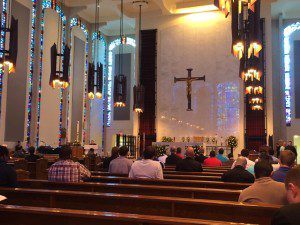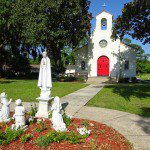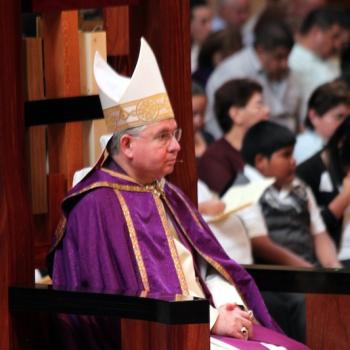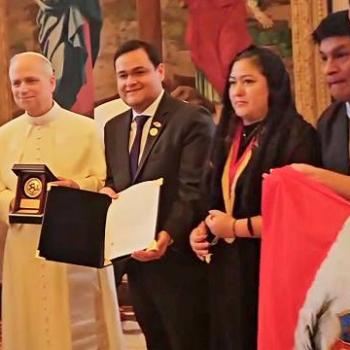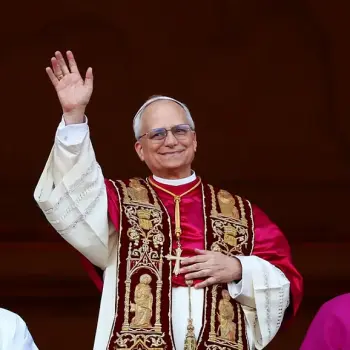How will the number of US-born Latino priests increase? Education.
Dr. Hosffman Ospinio, Assistant Professor of Theology and Religious Education at Boston College and author of a recent comprehensive study on US Catholic parishes with Hispanic Ministry, argues that even though there is no magic solution to increase US-born Latino vocations to the priesthood, education is key in the fostering of a culture of vocations to the Priesthood among Hispanic communities in the United States.
Responding to a desire to increase the number of US-born Hispanic vocations to the priesthood, the National Conference of Diocesan Vocation Directors (NCDVD) has been hosting regional workshops to discuss ways to foster a culture of vocations within Hispanic communities across the country. Last week, a workshop was held at Saint Vincent de Paul Regional Seminary in Boynton Beach, Florida where Dr. Hosffman Ospino spoke.
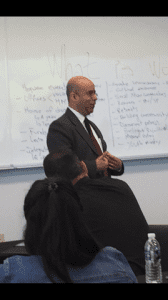
Statistics of newly ordained priests in the United States reveal that 70% of US priests went to Catholic school at some point in their lives, and that 90% of US religious sisters went to Catholic school at some point. The path to follow appears simple: it is imperative that more Latinos benefit from Catholic education.
The Catholic school system currently educates 1.9 million children and of those, 300,000 are Hispanic. Considering there are 8 million Catholic Hispanic school aged children, this means only 3.75% of Hispanics are receiving a Catholic school education. This number of students appears to become even smaller with the fact that 60% of US Catholics under the age of 18 are Hispanic.
Since the vast majority of Hispanic children are not in Catholic schools, the hope is that they are enrolled in a parish religious education program. Hosffman Ospino’s research reveals that only 10% of Hispanic children are enrolled in parish religious education programs. Simple math shows that only 1.1 million of 8 million Hispanic children are receiving formal catechesis either at a Catholic school or at a parish religious education program. We have a problem.
Hosffman Ospino articulated a common myth that must be debunked. The myth is that Hispanics are primarily immigrants. Of the 60 million Hispanics living in the United States, only 20 million are immigrants. The other 40 million are US-born. Hosffman Ospino noted that evangelization efforts conducted by the Catholic Church target primarily the 20 million immigrants, thus overlooking the vast majority of Hispanics. He further divided the US-born Latinos into two equal halves: 20 million that are second generation while the last 20 million are third generation or more.
Hispanics in the United States then may be divided into three equal parts:
Immigrants: 20 million whose first language is Spanish, of which 75% speak English.
Second Generation: 20 million who speak mostly English of which 25% speak no Spanish at all.
Third Generation +: 20 million who speak English and retain only some basics of Spanish. This segment is the largest growing population group in the whole Untied States.
It is necessary to better evangelize and reach US-born Latinos. Hosffman Ospino stated that there is a “need to reclaim ground in the understanding of vocation as living as a baptized Christian.” Right now, about two-thirds of US baptisms are of Hispanic babies, but only one-third of those children make their first communion, and only a handful are confirmed. Hispanic youth, for the most part, are not participating in the life of the Church in the numbers one would expect. For every Hispanic child who makes his or her first communion, there are two who are not making it, and two families who are disengaged from the Church.
Hispanics are considered the hope of the future for the institutional Catholic Church, but most Hispanics are not even participating in the life of the Church! There is much outreach needed.
Hosffman Ospino pointed out that in the past few decades, 14 million Hispanics have left the Catholic Church, and of these, 80% were second and third generation. The first immigrant generation remains very faithful, but the subsequent generations, like many youth today, drift away or reject the faith. The vast majority of those who left the Catholic Church become non-religious, they did not not necessarily become Protestant. This data stresses that the Church must reach out more effectively to millions of US-born Latinos. The lack of US-born Latino vocations to the priesthood appear to be the result of a tremendous disconnect between the Church and Latinos born in the US.
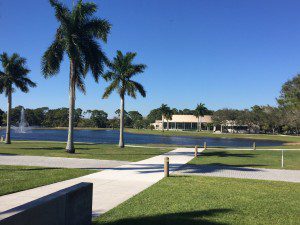
Secularism impacts Latino youth as much as other young people, the breakdown of the family and the increasing role of technology have also created new strains in society. These of course make outreach to Latino youth a greater challenge today.
Returning to the importance of education, only 70% of Hispanic children graduate from high school. Less than half of these graduates attend college, and most attend two-year or community colleges. Of those who begin college studies, the majority do not complete them. Hosffman Ospino argued that we are creating a subclass of citizens that is primarily Hispanic and Catholic. Parishes need to help Latinos first to finish high school, and to prepare them to enter college. A lack of educational opportunity stands as a hindrance for men to consider the Priesthood.
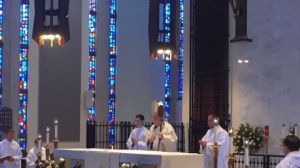
Hosffman Ospino noted that when children of immigrants attend college, they seek success and financial gain, not necessarily a religious vocation. The most popular majors for Hispanics in college are: international business, engineering, international relations, and linguistics. The least popular are: human services, education, and humanities. When the children of immigrants make it to college, they are more interested in realizing the American dream.
Archbishop Wenski of Miami mentioned in his homily during the workshop at Saint Vincent de Paul Regional Seminary that “no matter what ethnicity, culture or language we are talking about, the desire to become a priest is nourished essentially from intimacy with the Lord, in a really personal relationship, which is expressed above all by the desire to be with him.”
If the Catholic Church desires to increase the number of US-born Latino priests, she must first focus on higher Latino student enrollment in Catholic schools, more effective youth and young adult ministry, religious education programs more accessible and friendly to Latino families, and ministry to families who struggle in transmitting the faith to the new generation. It is imperative that a vision is set today, so that the seeds we plat now may grow into a plentiful harvest.
The pictures are mine, all rights reserved.


